What is SEO? The Complete Beginners Guide
by SEO Vikings
What is SEO and how to optimize your website?

SEO stands for Search Engine Optimization and it’s the process of improving the visibility of a website or web page in search engine results.
Google (and other search engines) has become the primary source of traffic to websites and the easiest way to get a large audience to visit your site. As a result, there are millions of sites out there competing for attention. If your website isn’t visible in these searches, then you’re missing an opportunity to connect with new visitors who could turn into customers.
There are three main elements to optimizing your website for search engines: URL structure, page content, and backlinks. In this article, I’ll explain each of these elements and how to improve each.
I will also give you examples on how to lay your page out using headings and give a brief explainer on each topic mentioned.
This guide is perfect for beginners and anyone who wants to get a better understanding of SEO.
It’s worth noting that SEO is a process, it takes time and has multiple ranking factors that affect your positioning in search engines.
SEO - It Sounds More Complicated Than it Should!
SEO, Search Engine Optimization. It sounds a lot more complicated than it is. Essentially, SEO is where you have a website and populate it with high-quality content that provides value to your visitors or potential customers while answering a search query entered into a search engine.
Your website will be ranked higher in search engines if it provides the answers to the searcher’s query.
Everyone who uses a search engine has search intent, what this means is that they have gone to Google to find an answer.
Let me explain…
We’ve opened up our browser and input
‘Best new TV’ into the search bar
The search intent here is to find the best new TV.
If your website was selling TVs, you would want your website to answer this query with a blog post or page on the best new TVs you offer and links to the products so the visitors can look into these products further.
Or if you were a plumber and someone was searching
‘Plumber Near Me’ or ‘Plumner in Town/City/State’
You would want your website to appear at the top and be filled with content that provides information about your services.
According to Hubspot, their recent report highlighted that there are 5.6 billion searches performed on Google…EVERYDAY!
All of these searches will be different variations of keywords and queries from people looking for an answer.
Your job is to answer those queries (not all 5.6 billion searches) and provide a valuable answer to the searcher.
But wait, it’s not that easy!
Before writing the best content you have ever written in your life, you need to know a few things to help it rank.
Rank or ranking in SEO refers to a website’s position in the search engine results page (SERP).
A Search Engine Results Page (SERP) is the results page from Google, Yahoo, Bing or whatever you use to search the internet.
How SEO Works
SEO is a process to rank your site on the first page of any search engine result. But the strategies of this job depend on a number of things.
The Google algorithm, for example, has around 200 ranking factors. So, you have to acknowledge those criteria before publishing your site.
As a beginner, you don’t need to know all of the ranking factors, but knowing the most important ones sure helps.
Google and Bing search engines use bots to crawl web pages. These search engine crawlers go from site to site analysing and scoring websites based on its content and value. That’s how they collect information about the pages.
When you publish a new website, for it to appear in Google it needs to be indexed.
What is a search engine index?
How do you get your website indexed in search engines?
To get your website indexed in search engines, you need to follow some basic rules. First, you must create unique content for each page of your site. Second, you should use keywords in your title tags, meta description, and URL. Third, you should include links back to your home page from other pages on your site. Finally, you should submit your site to search engine directories.
Search engine crawlers measure the web pages according to their search algorithms. It’s what is known as analyzing site indices, taking into account hundreds of data points, to determine the order of pages in the search results for a search query.
Search engine optimization is a representation of the visitor’s user experience. This is how web crawlers evaluate the quality of websites that the users look for.
Why do you need SEO?
Search Engine Optimization (SEO) is a way to influence search engines like Google, Bing, Yahoo, etc. to put your website at the top of the list when someone searches for a particular keyword. By doing this, you increase the chances that potential customers will find your website. As a result, your business grows its digital presence.
Ultimately, the primary goal of SEO is to increase the website visitors and drive those visitors to action.
A few SEO benefits include:
- Improved Rankings In Search Engine Result Pages (SERPs);
- Increased Organic Traffic;
- Higher Conversion Rate;
- Increased Customer Exposure With Accurate Data;
- Enhanced Online Reputation Among Others.

SEO is a process
There are a number of different elements and factors that come into play when optimizing your website
We can dive into the various ranking factors that influence whether a website appears higher in the results of page 1.
Now we understand we need valuable content that answers queries, but how do we know what those queries are?
This is where you would perform keyword research.
Keyword Research
What are keywords in SEO?
Keywords are words, phrases and queries that help search engines find your website. The best way to optimize your site for search engine rankings is to use a combination of keyword and meta tags.
Why are keywords important?
Keywords are important for search engine optimization (SEO) because they help you find your website when someone searches for something on Google. There are three types of keywords: broad match, phrase match, and exact match. Broad match keywords try to be as general as possible, while exact match keywords are specific. Phrase match keywords are a combination of words that are searched together, such as “travel agency” instead of just “agency.”

You need to know where your audience is online and what they are searching for, then you need to create content that answers those queries and searches.
There are a number of different ways of performing keyword research, the best way is to use something like Google itself.
Search Google and it will show you everything you need to know on page one. Check out what competitors are doing, look at their website and what they have on it, then create something better.
Discover what your target keywords are then write awesome content that includes them.
Don’t stuff your content with these target keywords though, this will look spammy and likely discourage Google from ranking your website higher.
Competitor Research
You need to know what your competitors on page one are doing with their website and their business. What did they do to get to page one?
Do they have lots of content? Is it high-quality content? Does it link to other pages in their website? Are they listed in multiple directories or places online?
To get into competitor research, you need to look under the bonnet of the website and see what’s happening beneath the surface.
This is where you would use a number of SEO tools to help you.
Writing Content
You need to know what your competitors on page one are doing with their website and their business. What did they do to get to page one?
Do they have lots of content? Is it high-quality content? Does it link to other pages in their website? Are they listed in multiple directories or places online?
To get into competitor research, you need to look under the bonnet of the website and see what’s happening beneath the surface.
This is where you would use a number of SEO tools to help you.

How to Layout Your Content
Here are a couple of things you need to know when laying out your content.
H1, H2, H3, H3, H4, H5, H6
No, I am not broken... let me explain
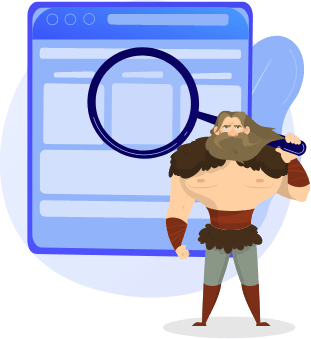
H1 = Heading 1
The most important part of your document. This is your title, the main heading of the document. Google bots or spiders scan your website and read the title of your page
Your H1 needs to have your main target keyword in so Google knows that is what the page is about
For example, if you are a plumber, your H1 would look something like this
Plumbing and Heating Services in (then City or Town name)
Boom, straight away you are telling the searcher and Google that your website page is about used cars for sale in your town or city.
It’s best practice to only have one H1 on your page, some people stuff their page with multiple h1 titles but I don’t advise this method. If it works for you, brilliant.
H2 - Heading 2
H2 = Subheading.
Subheadings are incredibly important too and should contain keywords and topics that are relevant to your page.
Your first H2 could look like this
Specialising in plumbing, bathroom installation, mobility & walk-in showers.
then you would have an introduction paragraph like:
Welcome to (company name), we are a small family-run plumbing company in (city or town name) that specialise in domestic plumbing, repairs, boiler maintenance and more.
You could then list the services you provide and the areas you provide services to.
Your next subheading could be a small paragraph on each service, for example
Bathroom Installations
We can also take care of all aspects of bathroom installations including shower screens, bathtubs, toilets, taps etc.
Mobility Showers
Our team has over 20 years of experience installing new bathrooms, fitting baths, showers and much more. We offer free quotes and advice.
Now anyone who visits your page, including Google can quickly understand that you are a plumbing company and you offer these services.
Best practice would be to then create pages on each of these services and optimize each page.

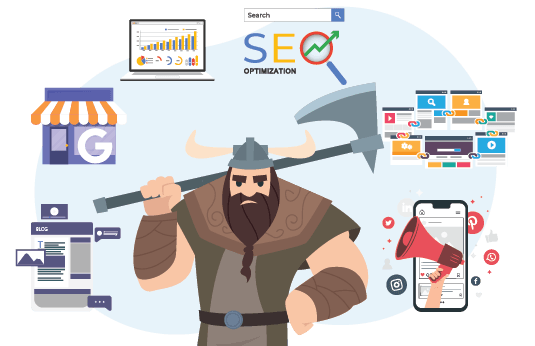

H3 - Heading 3
These are used as subcategories to further break up the content, making it easily scannable.
H1 – H3 are arguably the most important titles on your page.
Page layout example
Your page layout would look something like this. Note that a CTA means call to action. This is typically a button or anything that drives your visitor to action on your page.
Plumbing and Heating Services in City Name
(H1 – Main Heading / Title of the page)
Intro paragraph – This paragraph is super important. So, include keywords, areas and links to services or other pages your visitor may find helpful.
[ CTA Button]
Specialising in Plumbing, Bathroom Installations, Repairs & More!
(H2 – Subeading)
Paragraph
We offer the following plumbing services (H3 – subcategory or heading to break up content)
Small paragraph then bullet list of services that link to the service pages.
- Service
- Service
- Service
[ CTA Button]
[ CTA Button]
This is my preferred method of laying out a page and how I use H-Tags, but of course, you can choose to do this the way you would like to.
I would test everything and see what layout and formula drive the highest converting traffic.

The Core SEO Ranking Factors
Below is a list of some of the most important factors when it comes to ranking a website
- A Secure and Accessible Website (SSL Certificate)
- Page Speed (Including Mobile Page Speed)
- Mobile Friendliness
- Domain Age, URL, and Authority
- Optimized Content
- Technical SEO
- User Experience (RankBrain)
- Links
- Social Signals
- Real Business Information
What is an SSL certificate?
An SSL certificate is a digital security certificate used to secure web traffic between a website visitor and a server. The certificate ensures that the data transferred between the two parties is encrypted.
Why does website page speed matter?
Website page speed matters because it affects how quickly users can navigate through your site. If they cannot find what they want quickly, they may leave your site. The faster your site loads, the better chance you have at getting visitors to stay longer and convert them into customers.


Why is it important to have a mobile-friendly website?
A mobile-friendly website is essential for any business owner who wants to reach customers on the go. Mobile users spend more time browsing websites than desktop users do, and they also tend to be more engaged with the site. If your website isn’t optimized for mobile devices, then you’re missing out on a huge opportunity to connect with potential customers.
Why does domain authority matter?
A mobile-friendly website is essential for any business owner who wants to reach customers on the go. Mobile users spend more time browsing websites than desktop users do, and they also tend to be more engaged with the site. If your website isn’t optimized for mobile devices, then you’re missing out on a huge opportunity to connect with potential customers.
Why does domain age matter?
Domain age matters because it shows how long a website has been around. If a website has been around for a long time, then it is likely to be more popular and trusted. This means that it is easier to find information about the website, and it is also likely to rank higher in search engines.
Why should I optimize my website content?
Optimizing your website content means making sure that all of your pages load quickly, and that they are easy for visitors to read. This includes optimizing images, text, and links. If you don’t optimize your website content, then you may lose traffic from search engines, which could result in losing potential customers.
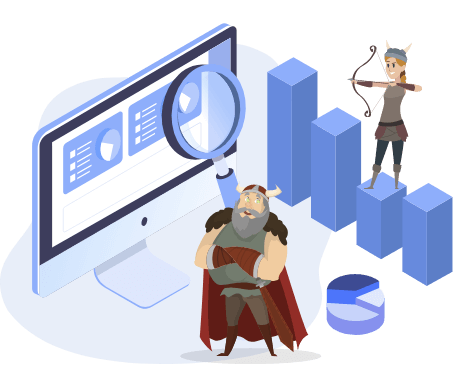
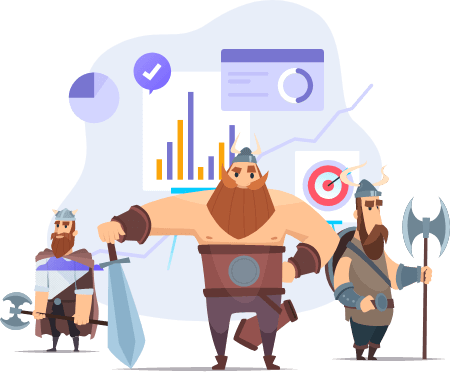
What does technical SEO include?
Technical SEO includes all aspects of optimizing websites for search engines such as Google, Bing, and Yahoo. This includes things like website speed, page load times, and mobile-friendliness. The goal of technical SEO is to provide a better experience for users, which translates into higher conversions.
What is Google Rank Brain?
Google Rank Brain is a new algorithm that has been developed by Google to help them rank websites better. The algorithm uses machine learning to learn what words and phrases are important for search results. This means that when you use certain keywords, Google will try to find other pages that contain those same keywords.
What are links in SEO?
Links in SEO are hyperlinks that point back to your website from other websites. These links help search engines find your site easier, and they also help visitors navigate your site. The number of links pointing to your site is called link popularity. Google rewards sites with high link popularity for doing things like adding new content, updating old content, and responding to comments.
What are the different types of links in SEO?
Links in SEO are hyperlinks that point back to your website from other websites. These links help search engines find your site easier, and they also help visitors navigate your site. The number of links pointing to your site is called link popularity. Google rewards sites with high link popularity for doing things like adding new content, updating old content, and responding to comments.
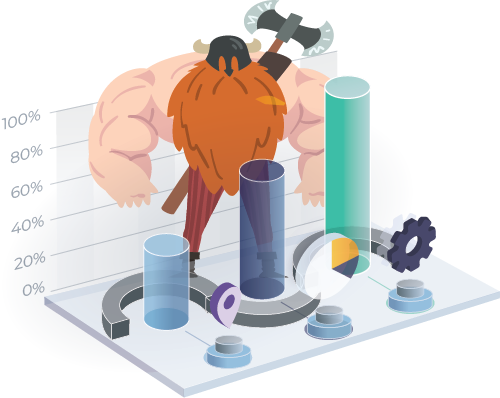
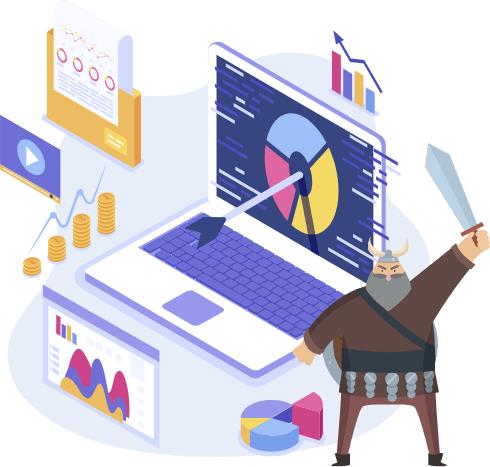
What are social signals in SEO?
Social signals are a way for search engines to determine what content is relevant to users. Google uses these signals to determine which web pages should be ranked higher in search results. The search engine looks at the number of times a page has been shared, how many links point back to a page, and other factors to determine whether a page is a trustworthy source of information.
Why does Real Business Information matter in SEO?
Real business information matters in SEO because Google uses it to determine how relevant your website is to search queries. If your site has a high number of pages that are not related to the search query, then Google will lower your page rank. The best way to ensure that your webpages are ranked highly for specific keywords is to use rich snippets, which are also known as Schema markup.
What Is SEO And Digital Marketing Relevancy?
Since SEO is the art of persuading search engines to rank your site higher, digital marketing is the art of persuading humans to visit your site. When these two forces are combined, the result is best described as multi-touch conversion.
SEO and digital marketing relevancy can rank well in search engines along with social media sites. Publishers do it by posting relevant content regularly. In brief, they use appropriate search terms or keywords in those online content.
After all, building relevancy starts with these relevant keywords. Although, the keywords arrangement, targeted customers, and inbound links also connect the line between SEO and Digital marketing. But mainly, these keywords determine whether a piece of content will rank well in major search engines.
The ranking possibility of your site increases when the content maintains relevancy to the user intent. Be it on the search engine or social media, each type of content must meet the target audiences’ goal.
In this case, Some websites may have an easier time ranking due to their digital marketing tactics. They connect the off-page factors, external links, and inbound links to their social media channels. And that help to increase their website visit rate.
So, those who don’t have proper knowledge of digital marketing should rethink their strategies. They can also use several collaborative tools. For example, the keyword research tool or google analytics. It will help them to stay up with the competition.
What Are the Benefits of SEO?
Search engine optimization helps search engines find your website and rank it highly for specific keywords. This allows users to find your website easily and click through to your site. The best way to optimize your website is to use relevant keywords in your web page titles, meta descriptions, URLs, headings, and body copy.
One of the most significant parts of digital marketing is SEO (Search Engine Optimization). It can be used to drive traffic to your site or blog, increase the number of conversions, and improve your company’s reputation.
- Search engine optimization is the process of optimizing a website so that it appears higher in search results.
- The more people who find you through search engines, the more traffic you’ll get.
- It makes your site easier to find by web users.
- You can increase your ranking on Google.
Meta tags explained
Meta tags include title, description, and category. Title tags are used to describe the content of your pages. Description tags are usually 150 characters long and contain all the information about your page that Google will display when someone searches for your site. Category tags are used to group similar pages together.
What is a meta title?
A meta title is the first line of text that appears when someone searches for a webpage on Google or other search engines. The meta title is often used to describe what the page is about. People spend less than half a second deciding whether to click on a link, so every element of the web page should be optimized to help them decide whether they want to read the rest of the page.
What is a meta description?
A meta description is a short summary of what your web page contains, for example, “This is a blog about how to start a business.” Meta descriptions are displayed underneath your title tag in search results. They are useful for increasing click-through rates.
Get Improved Rankings In Search Engine Result Pages (SERPs)
Online marketers spend a lot of time and money on SEO to rank their content higher in search engine result pages. It’s because, the better the rank, the better the traffic to your site.
And outbound links are the most essential ranking elements for an article. That’s why online marketers will do anything to get some high-quality backlinks.
Therefore, an SEO optimizer should know that keyword stuffing and link building are two things that Google hates. The best strategy would be to write a good article first and then work on getting backlinks later. A natural flow in your content will help you avoid red flags with Google’s algorithms.
Increase Your Organic Traffic
The increase in organic traffic is an indication that SEO is important for a company’s marketing strategy.
Organic traffic has increased by 40% in the last year. This means that ranking on Google has become more challenging.
This SEO-focused rise and competition between brands have also created a need for more innovative ways of attracting visitors to a website.
SEO experts have found that long-tail keywords are not as important as they used to be. Instead, content quality is now imperative for generating organic traffic.


SEO Has a Higher Conversion Rate than Paid Ads
SEO also plays a notable role in producing a higher conversion rate for your website. Although this factor depends more on high-quality content. But keeping that aside, you need to apply relevant keywords to make an SEO Optimized content. It helps to generate conversion rate at the end.
Henceforth, the long-term and steady increase in conversion rate indicates that the SEO strategy works and drives a positive ROI. Due to this evidence, the SEO strategy should be considered a success, and more emphasis should be placed on creating unique content for the user.
You Can Increase Brand Awareness
There are many aspects to SEO, but the most important is the ability to create a cohesive, engaging website for your customers that accurately reflects your business.
It’s because your website is the door to the final frontier for your potential customer. It’s the leading force that will propel your potential customer through the funnel to engage with you or purchase your product eventually.


Enhance Your Online Reputation
Many businesses are looking for ways to enhance their online reputation. SEO is one approach to accomplish this. This popular strategy is using a variety of techniques and technologies to boost a website’s search engine visibility.
To achieve the desired results, SEO is continually evolving in line with technology. New websites come online each day, and some even cater for specific geographic areas.
Google is constantly innovating, too, so that the front-page results always provide users with relevant, useful information.
Henceforth, if your website gets ranked followed by the search engine algorithm policies, it will enhance online reputation among search engine traffic.
How Your Competition is Leveraging SEO to Grow Their Business
SEO is one of the most powerful and affordable ways to advertise your business. It’s also a wonderful method to outperform your competitors.
Leveraging SEO is also a cost-effective way to market your business. According to research published by Search Engine Journal, 48 per cent of marketers use SEO as their primary marketing strategy. Google Adwords reported that companies who use SEO spend an average of 16% less on advertising than those who don’t.
SEO can be used to help you find clients who are looking for what you offer, as well as ones who have not heard about you but may have similar needs and interests and will be more likely to buy from you.
The Basic SEO Strategies To Improve A Website's Visibility
SEO efforts are usually associated with one of two camps: on-page optimization or off-page optimization. Both of these strategies are beneficial to improve a website’s visibility. Depending on a particular website, either or both of these tactics may be useful for optimizing search engine results.
On-page SEO includes titles, meta descriptions, and anchors or hyperlinks to other relevant pages on the same site. Links from other websites pointing back to the target page are a part in off-page SEO.
On-page optimization is usually possible without any external assistance. But off-page optimization requires link building efforts which are often time-consuming and expensive for small businesses that receive regular coverage from blogs or news outlets.
For example, many SEO experts claim that if a small business with no budget for off-page SEO works hard to promote its online assets in the hope of receiving links. It will likely succeed in ranking in some search results. But that will most like take a huge time.
Therefore, it’s better to apply some basic principles of outbound link strategy to improve your website’s visibility more quickly.
The Verdict
One of the most important aspects of marketing for your business is increasing customer exposure. The easiest method to accomplish this is to boost your online reputation. So, you may conduct it through search engine optimization.
You can also devise a strategic SEO strategy. And then follow a specific set of procedures like building backlinks, schema markup, internal links, guests post, etc. It will aid in the growth of organic search, organic search traffic, and organic search rankings.
What is Schema Markup?
Schema markup is a way to add structured data to your website. This allows search engines like Google to understand what information is available on your site, which helps them index your pages faster. The best part about schema markup is that it’s free!
There is a lot to learn when it comes to SEO, but this guide should cover the core ranking factors and give you a little insight into how you can optimize your website.
It’s worth noting that SEO is a process, it takes time and has multiple ranking factors that affect your positioning in search engines.
Go Into Battle With the
SEO Vikings at Your Side
Please find out more about our pricing packages
and start to invade the competition!

